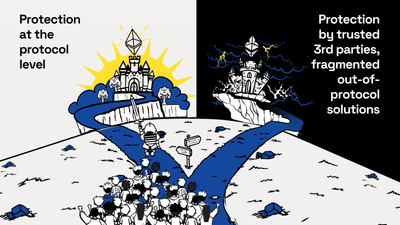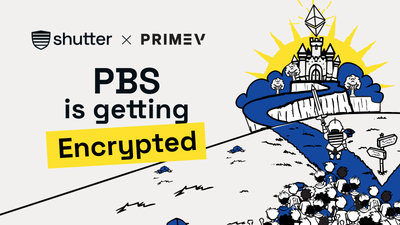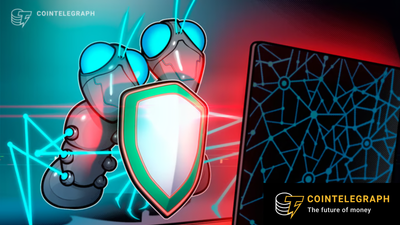Mode and Shutter are thrilled to announce the launch of a Shutterized Mode testnet within the next three weeks! This means a significant step towards a fully MEV-aware Mode and a safer, more censorship-resistant, front-running protected, and base layer neutral Mode.
We also see the encrypted mempool as a critical piece and an enabler for a more comprehensive, MEV-aware strategy for Mode, which could involve sustainable extraction and distribution of back-running related MEV, unlocking new revenue streams for the ecosystem.
Background
Mode already implements sequencer fee sharing (SFS) to distribute sequencer fees to developers and applications building on top.
In addition to sequencer fees, revenue from MEV extracted could represent an additional revenue stream available to the protocol and developer incentivization.
The ability to order transactions lies with the sequencer, so they have the ultimate ability to extract MEV revenue. This could represent an increasingly relevant income stream, especially as MEV grows and sequencer operation becomes increasingly commoditized.
However, extracting MEV is a balancing act: Unlocking additional revenue should not degrade UX/end-user welfare. Additionally, the protocol must be as neutral, decentralized, and censorship-resistant as possible.
This separate testnet is designed to evaluate practically:
- An implementation of a Shutterized, encrypted mempool for front-running protection and real-time censorship for Mode.
- A two-stage back-running MEV extraction and distribution strategy.
Two weeks ago, we published the roadmap for a Shutterized OP Stack testnet. This effort builds on top of this and extends it.
Also, check out this mission request to Optimism Collective to build a generalized encryption interface for the OP Stack. The mission received support from top 100 OP delegates and is likely to pass. Building a prototype of an encrypted mempool for the OP Stack is part of this mission, so this would be a perfect fit!
1) Encrypted Mempool for Mode
In a nutshell
- Shutterization means encrypting the mempool via threshold encryption and a decentralized Keyper set
- Transaction ordering and inclusion are finalized while they’re still encrypted, such that no one can censor or front run
- This implementation is based on Shutter’s encrypted mempool proposal for OP Stack rollups on the Optimism Governance forum: https://gov.optimism.io/t/shutterized-optimism-an-encrypted-mempool-for-the-op-stack/6387/2
Key aspects
- Safer trading for DeFi users
- Added (real-time) censorship resistance
- More profitable trading for DeFi users (because less value is lost due to malicious MEV)
- Mode sequencer can plausibly argue that they no longer have the ability to front run transactions nor censor transactions based on their content by design (potential compliance, image, and regulatory benefits for the sequencer operator)
- Mode sequencer still retains the ability to collect or distribute back-running related MEV (arbitrage and liquidations). See below
- Encrypting transactions remains optional, so DApps can opt-in to have users send encrypted transactions or choose not to do so
The architecture of this platform is centered around a Keyper committee responsible for generating encryption keys to ensure transaction security, managed by the L2 Keyper Set Contract. Users encrypt their transaction data using the Eon key provided by the Keyper committee and submit it as a Commit Transaction to the Shutter Inbox Contract. This contract stores the encrypted data and charges a fee. Upon block sealing, Keypers produce a decryption key shared via a P2P network, allowing the sequencer to decrypt and execute transactions at the block's start. The system's design requires sequencer adherence to these protocols, with blocks lacking the correct decryption key getting invalidated. The architecture includes essential smart contracts like the Keyper Set Contract, Key Broadcast Contract, and Shutter Inbox Contract, alongside a client library to aid DApps in encryption and transaction processing.
2) Backrunning MEV Sharing to Devs/Users
We’re proposing to approach this in two stages:
Stage 1: MEV-Geth-esque solution which pays any profit into the Fee Sharing Contract (based on https://github.com/Canto-Improvement-Proposals/CIPs/blob/main/CIP-001.md, https://github.com/code-423n4/2022-11-canto/blob/main/Canto/contracts/turnstile.sol)
Assuming the sequencer lacks interest or capability in specializing in back-running-related MEV, it remains possible that third parties could develop a specialized searcher to create a back-running MEV batch upon public release of the decryption key. In this scenario, the sequencer might opt to engage in a market for the first transaction (or batch of transactions) within a block, effectively accepting bribes. This process would involve the sequencer selecting the highest bid, with payment integrated into the transaction batch.
This concept mirrors the approach of the original MEV-Geth, an early product from Flashbots. For implementation, the sequencer's op-geth node would need alteration to ensure that the first transaction in every block (following the reveal transaction) originates from this competitive market.
The PoC for this would be:
- Modify op-geth node (MEV-Geth-esque)
- to include the “MEV-market” transaction at the top after decryption
- Validate transactions in that they pay a bribe to the sequencer sharing contract
- Choose the highest bid from the MEV market pool
- An open market with a specialized endpoint
- Write a basic MEV bot that uses a specialized endpoint (could partner with an existing player in the MEV or solver arena such as propellerheads or RavenDAO)
This would be a relatively minor addition to the code, and the functioning and economics of these concepts are well understood due to Flashbot’s prior work.
Stage 2: Sequencer auctions off transaction ordering rights to MEV searchersbased on https://ethresear.ch/t/mev-auction-auctioning-transaction-ordering-rights-as-a-solution-to-miner-extractable-value/6788
The MEV Auction (MEVA) by Karl Floersch from Optimism proposes a practical approach to address Miner Extractable Value (MEV) in blockchain networks. It involves auctioning the rights to reorder transactions within a specified block window. This system separates the roles of block producers, who propose transaction sets, and sequencers, who determine the order of transactions based on auction outcomes. Sequencers provide instant guarantees on transaction inclusion, with penalties for non-compliance. MEVA can be implemented in Layer 2 blockchain protocols, aiming to realign incentives, enhance decentralization, and potentially serve as a primary revenue stream for blockchain sustainability. Concerns like auction collusion and network security are mitigated through measures like open-source sequencer software and sequencer security deposits.
Roadmap Proposal
Key Steps Ahead
The upcoming launch of the Shutterized Mode testnet in February 2024 is a critical step towards a fully MEV-aware Mode, enhancing user security and trading efficiency. Key developments include:
- Encrypted Mempool Implementation: This feature will protect DeFi users from front running and censorship, utilizing threshold encryption for secure transaction processing.
- Two-Stage MEV Extraction Strategy: We're rolling out a dual approach for MEV extraction - initially adapting the sequencer node for MEV-market transactions, followed by introducing MEV Auctions (MEVA) for transparent transaction ordering.
- Roadmap Goals: Post-testnet launch, we'll unveil the MEV extraction PoC. We plan to introduce the MEV-aware Mode mainnet (pending success of the testnet and viability of integrating into Mode mainnet) by April to May 2024 and potentially integrate MEV auctions by Q3 2024.
We're excited to move forward with these innovations, aiming for a more secure and efficient transaction supply chain on Mode!
Links and Resources
- Roadmap for a shutterized OP Stack testnet
- Mission request to OP Collective to build a generalized encryption interface for the OP Stack
- Definition, architecture, and research into the viability of an encrypted mempool for the OP Stack
- Demo and completion of the Optimism Builders grant
- Github
Stay tuned for more updates, follow Shutter on X, and join the Shutter Forum!







